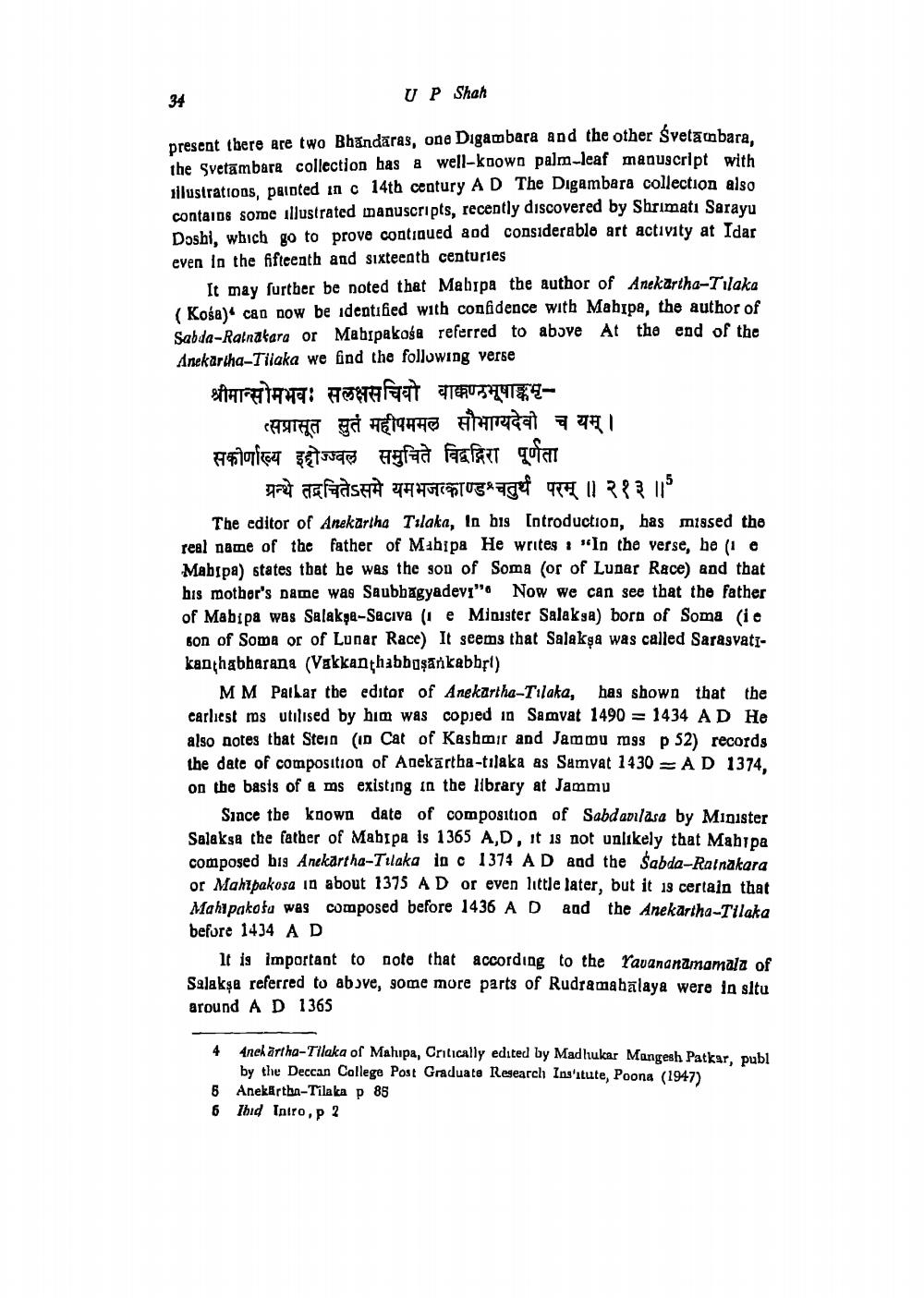________________
UP Shah
present there are two Bhandaras, one Digambara and the other Svetambara, the Svetambara collection has a well-known palm-leaf manuscript with llustrations, painted in c 14th century AD The Digambara collection also contains some illustrated manuscripts, recently discovered by Shrimati Sarayu Doshi, which go to prove continued and considerable art activity at Idar even in the fifteenth and sixteenth centuries
34
It may further be noted that Mahipa the author of Anekartha-Tilaka (Kośa) can now be identified with confidence with Mahipa, the author of Sabda-Ratnakara or Mahrpakoja referred to above At the end of the Anekartha-Tilaka we find the following verse
श्रीमान्सोमभवः सलक्षसचिवो वाकण्ठभूषा
सप्रासू सुर्त महीपममल सौभाग्यदेवी च यम् । सकोर्णाख्य इहोज्ज्वल समुचिते विद्वद्विरा पूर्णता
ग्रन्थे तदचितेऽसमे यमभजाकाण्ड' चतुर्थं परम् ॥ २१३ ॥
The editor of Anekartha Talaka, In his Introduction, has missed the real name of the father of Mahipa He writes: "In the verse, he (e Mahipa) states that he was the son of Soma (or of Lunar Race) and that his mother's name was Saubhagyadevi" Now we can see that the father of Mabipa was Salakse-Saciva (e Minister Salaksa) born of Soma (ie son of Soma or of Lunar Race) It seems that Salakṣa was called Sarasvatikan habharans (Vakkanthabbosankabbr)
M M Pathar the editor of Anekartha-Tilaka, has shown that the earliest ms utilised by him was copied in Samvat 1490 1434 A D He also notes that Stein (in Cat of Kashmir and Jammu mss p 52) records the date of composition of Anekartha-tilaka as Samvat 1430 = AD 1374, on the basis of a ms existing in the library at Jammu
Since the known date of composition of Sabdavilasa by Minister Salaksa the father of Mahipa is 1365 A,D, it is not unlikely that Mahipa composed bis Anekartha-Tilaka in c 1374 AD and the Sabda-Ratnakara or Mahipakosa in about 1375 AD or even little later, but it is certain that Mahipakota was composed before 1436 A D and the Anekartha-Tilaka before 1434 A D
It is important to note that according to the Yavananamamala of Salakṣa referred to above, some more parts of Rudramahalaya were in situ around A D 1365
4 4nekartha-Tilaka of Mahipa, Critically edited by Madhukar Mangesh Patkar, publ by the Deccan College Post Graduate Research Ins'itute, Poona (1947)
6 Anekärtha-Tilaka p 85
6 Ibid Intro, p 2




